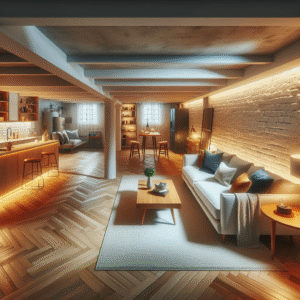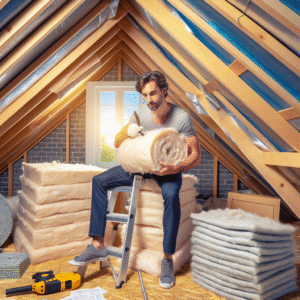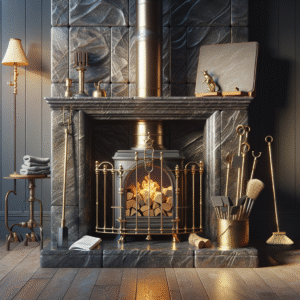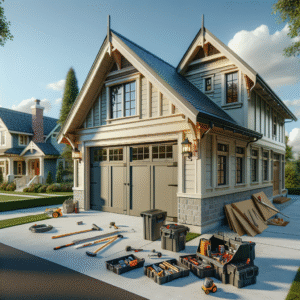Are you dreaming of adding an outdoor kitchen to your home? Whether you’re looking to host summer barbecues or enjoy quiet evenings with a meal under the stars, constructing an outdoor kitchen can enhance your living space and increase your home’s value. In this blog post, we’ll guide you through the essential considerations before building, choosing the right materials and appliances, and provide a step-by-step guide to creating your custom outdoor kitchen. Let’s transform your backyard into a stylish and functional culinary oasis!
Essential Considerations Before Building an Outdoor Kitchen
Before you break ground on your new outdoor kitchen, it’s crucial to plan carefully. Here are some key aspects to consider:
- Assessing Space and Location: Measure your available space and choose a location that complements your home’s layout and existing outdoor features.
- Understanding Local Weather Conditions: Consider the climate in your area. Will you need overhead coverings or heating solutions to extend the usability of your outdoor kitchen?
- Zoning Laws and Building Permits: Check with your local municipality to understand the specific codes and permits required for an outdoor kitchen to ensure compliance and safety.
Choosing Materials and Appliances for Durability and Style
Selecting the right materials and appliances not only dictates the longevity of your outdoor kitchen but also its overall look and functionality:
- Selecting Weather-Resistant Materials: Opt for durable materials like stainless steel or treated wood that can withstand the elements.
- Best Appliances for Outdoor Kitchens: Invest in high-quality grills, refrigerators, and sinks designed specifically for outdoor use.
- Custom Design Tips for Aesthetics and Functionality: Plan your layout to include sufficient counter space and incorporate elements that match the style of your home.
Step-by-Step Guide to Constructing Your Custom Outdoor Kitchen
Ready to build? Follow these steps to ensure your outdoor kitchen turns out just as you’ve imagined:
- Designing the Layout: Sketch your design or use online tools to create a blueprint that optimizes space and flow.
- Installation of Utilities: Gas, water, and electricity are essential for a fully functional kitchen. Consider hiring professionals to handle these installations safely.
- Hiring Professionals vs. DIY: Decide whether to DIY smaller projects like assembling cabinetry, but professional help is recommended for more complex tasks like utility installation.
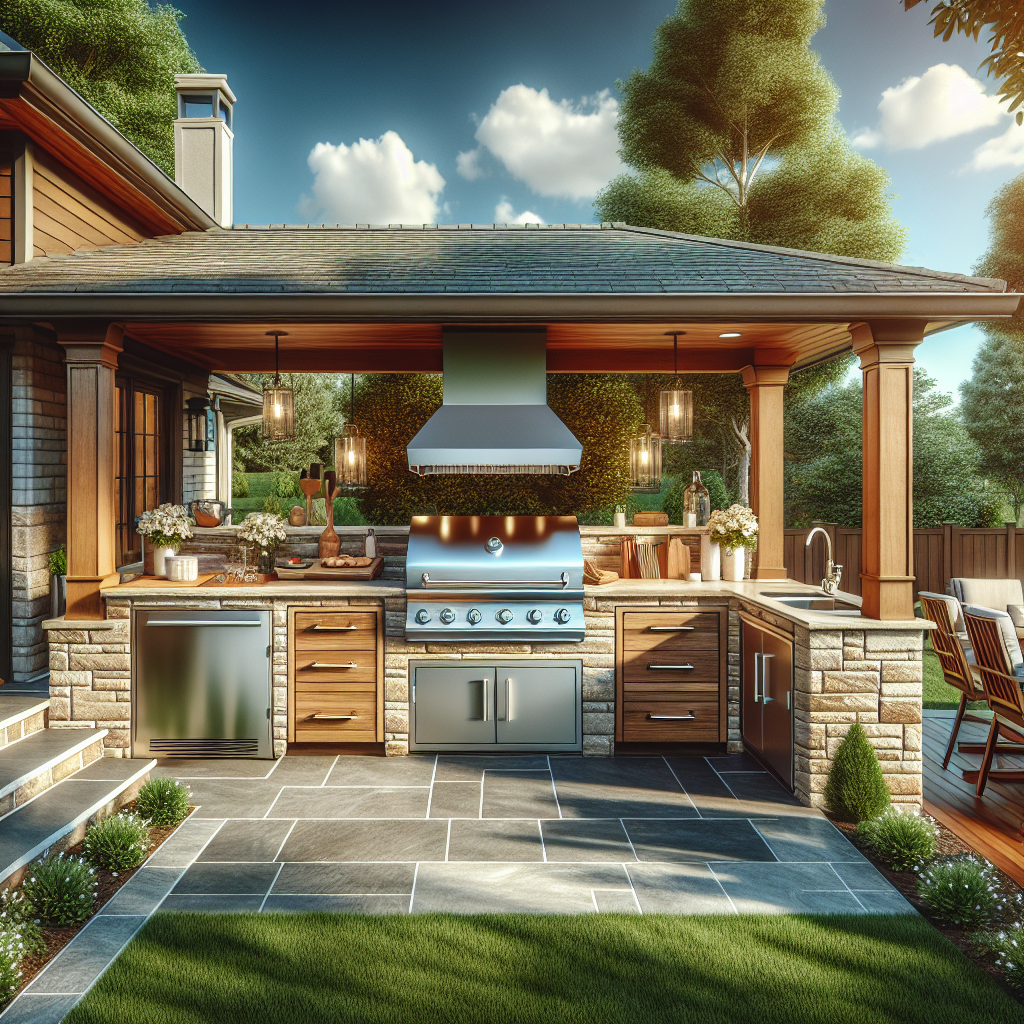
If you’re ready to take your home improvement or construction project to the next level, we can help! Find trusted contractors on BuildNet, whether you’re looking for renovations, new builds, electrical work, plumbing, or anything in between. Our directory connects you with qualified professionals who can make your vision a reality.
Essential Considerations Before Building an Outdoor Kitchen
Thinking about adding a stylish and functional outdoor kitchen to your home? That’s fantastic! An outdoor kitchen not only boosts your home’s entertainment quotient but can also increase its market value. However, before you start choosing that perfect grill or picking out tiles, there are a few crucial aspects you need to consider. Let’s dive into what you need to know to ensure your outdoor kitchen project is a success right from the start.
Assessing Space and Location
First things first, where are you planning to install your new outdoor kitchen? The location within your property can significantly affect both the construction process and how you’ll eventually use your space. Here are a few tips:
- Proximity to Your Indoor Kitchen: Think about how far you want your outdoor kitchen to be from your main indoor kitchen. Closer proximity can make it easier to carry items outside and also helps during unfavorable weather conditions.
- Level Ground: Choose a location that is on level ground to avoid the additional cost and hassle of leveling it out.
- Sun and Shade: Consider how much sun the area gets. Too much sun can overheat the area, making it uncomfortable, while too much shade might keep the area too cool during colder months.
- Wind: Wind direction can affect your cooking and dining experience. It’s generally advisable to have your grilling station positioned downwind from dining and seating areas to keep smoke at bay.
Take your time to walk around your yard and envision where your outdoor kitchen could integrate seamlessly. This foresight can save you a lot of adjustments and surprises during the construction phase.
Understanding Local Weather Conditions
Your local climate plays a pivotal role in many decisions regarding the design and materials for your outdoor kitchen. For instance, if you live in an area that’s prone to heavy rain or snow, you’ll need to think about durable materials and possibly a robust covering solution. Here’s a breakdown:
- Rain and Snow: In areas with heavy precipitation, consider installing a pergola or a full roof structure to protect your appliances and furniture.
- Temperature Extremes: Materials that can withstand temperature variations without cracking or losing integrity are crucial in places with harsh winters or extremely hot summers.
- Humidity: High humidity can lead to rust and corrosion in appliances. Opt for materials and appliances that are rated for high humidity and salt air if you live near the coast.
Zoning Laws and Building Permits
Before you get too carried away with planning, it’s important to understand the legal side of building an outdoor kitchen. This can vary significantly depending on where you live. Here’s what you need to consider:
- Building Permits: Most localities will require you to obtain a building permit for constructing an outdoor kitchen, especially if it involves gas, electrical, or plumbing work. It’s essential to apply for this early to avoid any legal headaches later.
- Zoning Laws: These laws dictate what you can build and where. They might influence the size of your kitchen, the types of structures you can erect, and how utilities should be handled.
- HOA Rules: If you live in a community with a homeowners’ association (HOA), make sure to check any additional restrictions or approval processes needed for outdoor construction.
It’s wise to visit your local planning office or consult with a professional who understands the nuances of local regulations. This step is crucial not just to ensure compliance, but also to integrate these rules into your design plan effectively.
There you have it—key considerations to ponder before diving into the building phase of your outdoor kitchen. Take the time to carefully plan and execute these initial steps, and you’ll be well on your way to creating an outdoor cooking space that is both beautiful and functional. Remember, the better the planning, the smoother the construction will go, and soon, you’ll be hosting memorable gatherings in your new outdoor kitchen!
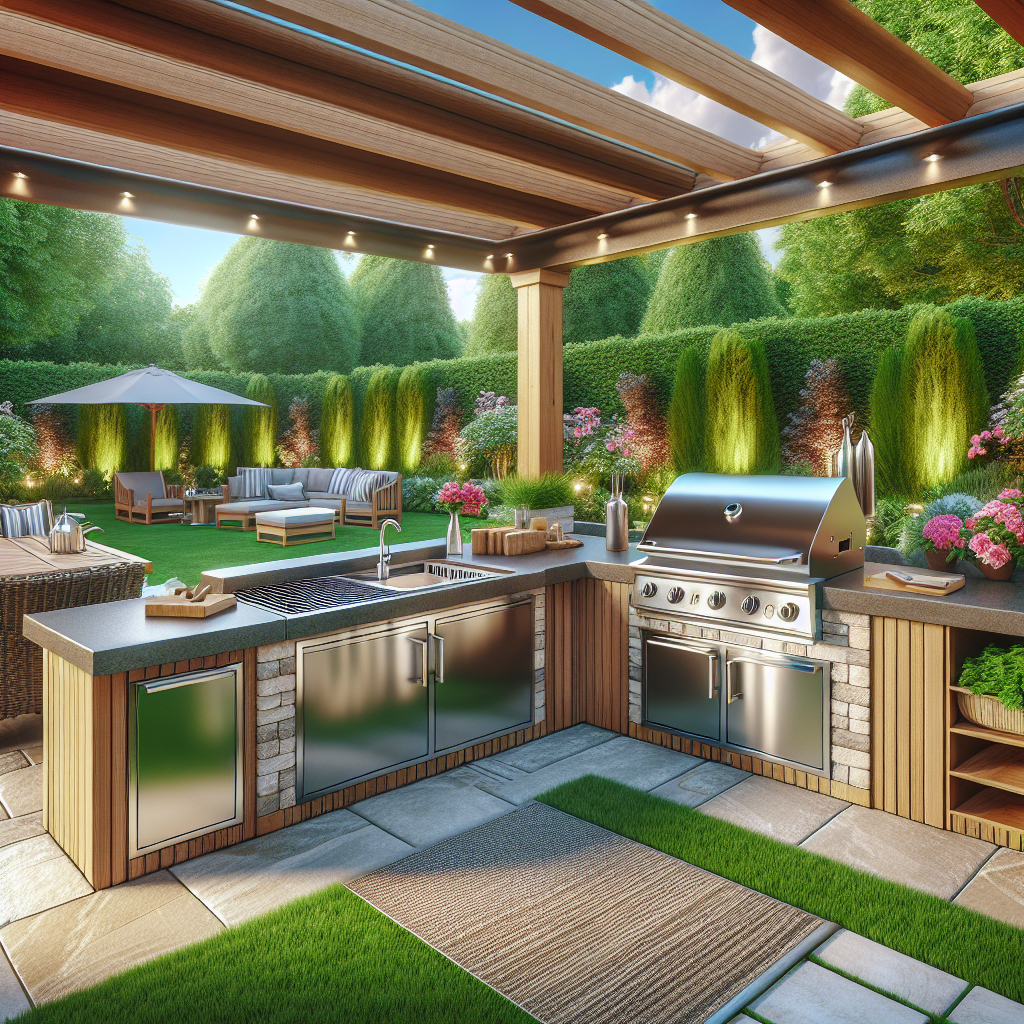
Choosing Materials and Appliances for Durability and Style
When dreaming up your perfect outdoor kitchen, it’s not just about picking what looks good. You need materials and appliances that can stand up to your local climate and still shine! Whether you’re nestled in the snowy mountains or lounging by the beach, the choices you make now will determine how your outdoor kitchen weathers the seasons. Let’s dive into some expert tips on selecting the best materials and appliances that blend durability with aesthetic appeal.
Selecting Weather-Resistant Materials
First things first, let’s talk materials. The right choices can ensure your outdoor kitchen remains vibrant and functional year after year. Here are some top picks:
- Stainless Steel: Loved for its durability and sleek look, stainless steel is highly resistant to rust and corrosion, making it perfect for all sorts of weather conditions.
- Teak Wood: If you’re going for a warm, natural look, teak is a fantastic choice. It’s not only beautiful but also exceptionally resistant to moisture, decay, and pests thanks to its natural oils.
- Stone Countertops: Materials like granite, soapstone, or slate can handle heat, cold, and a lot of cooking action without losing their charm.
- Concrete: For a modern twist, concrete is incredibly versatile and can be poured to fit any space perfectly. It’s also tough as nails against severe weather conditions!
Each material has its unique benefits, so consider what’s most important for your lifestyle and local climate. Whether it’s the low maintenance of stainless steel or the natural elegance of stone, your choice should align with both practicality and personal style.
Best Appliances for Outdoor Kitchens
Choosing appliances for your outdoor kitchen isn’t just about picking the shiniest options available. Here’s what you need to know to select appliances that won’t just survive but thrive outdoors:
- Grills: Essential for any outdoor kitchen, look for high-quality stainless steel grills that offer excellent heat retention and weather resistance.
- Outdoor Refrigerators: Ensure they’re certified for outdoor use, with features designed to withstand temperature fluctuations and humidity.
- Pizza Ovens: A fun addition! Choose from wood-fired or gas models, depending on your preference and the practicality of fuel sources in your area.
- Smokers: For the BBQ enthusiasts, smokers make a great centerpiece in any outdoor kitchen. Opt for models designed specifically for outdoor use to ensure longevity.
Remember, the best appliances for your outdoor kitchen are those designed to handle the demands of outdoor exposure. Look for robust construction and proven outdoor performance.
Custom Design Tips for Aesthetics and Functionality
Creating a kitchen that looks great and works even better is all in the details. Here are a few custom design tips to keep in mind:
- Layout: Think about the flow of your space. You’ll want a layout that allows for easy movement between your grill, sink, and refrigerator. A popular choice is the “working triangle” layout, which provides efficiency and ease of movement.
- Lighting: Good lighting is crucial, not just for cooking after sunset but also for creating the right mood. Consider layered lighting with overhead, task, and ambient options.
- Storage: Ample storage solutions help keep your outdoor kitchen tidy and functional. Opt for waterproof cabinets and drawers to protect your utensils and cookware from the elements.
- Seating: Integrating comfortable seating areas near the cooking zone encourages interaction and makes the space more welcoming.
With these tips in mind, you’re well on your way to designing an outdoor kitchen that’s as robust as it is beautiful. Remember, the key is to balance style with substance, choosing materials and appliances that offer both resilience and aesthetic appeal. Happy designing!
Step-by-Step Guide to Constructing Your Custom Outdoor Kitchen
Are you dreaming about adding a custom outdoor kitchen to your home? Whether you’re a culinary enthusiast or simply love hosting backyard barbecues, an outdoor kitchen can significantly enhance your outdoor living space. Let’s dive into the nitty-gritty of building one from scratch, focusing on practical steps that ensure your project runs smoothly from conception to completion.
Designing the Layout
First things first: planning your layout is crucial. Consider how you’ll use the space. Do you need a large grill area or perhaps a pizza oven? How about seating arrangements or bar-style eating areas? It’s not just about cooking; it’s about creating a functional space that caters to gathering and entertaining as well.
- Work Triangle: Implement the classic kitchen ‘work triangle’ between your grill, sink, and fridge. This setup minimizes unnecessary movements and allows for efficient cooking.
- Space Planning: Ensure there’s ample room for people to move around comfortably. Incorporate enough counter space for food prep and serving.
- Integration: Your outdoor kitchen should complement your home’s architecture. Choose a design that harmonizes with your home’s exterior for a seamless look.
Use online design tools or consult with a professional designer who specializes in outdoor spaces. They can offer insights into the latest trends and technologies in outdoor kitchen design.
Installation of Utilities: Gas, Water, and Electricity
The installation of utilities is a critical step that often involves complex processes:
- Gas: Whether you’re using natural gas or propane, safety comes first. Hiring a certified professional ensures your gas lines are properly installed and meet local safety regulations.
- Water: A sink in your outdoor kitchen adds convenience. Running water lines outdoors requires knowledge of freeze protection and proper drainage, which a licensed plumber can handle efficiently.
- Electricity: Electricity will power your lighting, appliances, and possibly some entertainment equipment. An electrician can ensure that all electrical components are safe from the elements and meet local codes.
Always check local building codes and hire licensed contractors for utility installations. This not only ensures safety but also avoids potential legal issues with non-compliance.
Hiring Professionals vs. DIY: What You Need to Know
Deciding whether to DIY or hire professionals depends largely on your skills, budget, and the project’s complexity:
When to DIY
If you have experience in construction, electrical work, or plumbing, you might opt to take on some tasks yourself. Simple structures like counters or mobile carts can be feasible DIY projects. However, it’s important to honestly assess your skills and the time you can commit. DIY can be rewarding but also challenging.
When to Hire Professionals
For most homeowners, hiring professionals is the safest and most efficient way to go about constructing an outdoor kitchen, especially when it involves utilities. Qualified professionals ensure:
- Quality Workmanship: Their expertise results in a high-quality, durable outdoor kitchen.
- Compliance with Codes: Professionals are familiar with local building codes and permits, reducing the risk of legal issues.
- Safety: Properly installed gas, water, and electrical systems minimize the risk of accidents.
Furthermore, professionals can provide valuable advice on materials and designs that you might not have considered. Their insight can help transform your vision into reality while potentially saving money on materials and maintenance in the long run.
In conclusion, building an outdoor kitchen is a significant investment in your home and lifestyle. By planning the layout carefully, ensuring proper installation of utilities, and deciding on the DIY vs. professional hire wisely, you can achieve a functional, stylish, and safe outdoor cooking space that enhances your home’s value and your enjoyment of it.

What are the initial considerations I should make before building an outdoor kitchen?
Before you embark on building an outdoor kitchen, it’s crucial to assess a few key aspects:
- Space and Location: Determine where your kitchen will go and how much space you have. This will influence the design and the appliances you can include.
- Local Weather Conditions: Understanding your climate can help you choose materials that will withstand your local weather, from extreme heat to freezing temperatures.
- Zoning Laws and Building Permits: Check with your local zoning office to understand what you can and cannot do and whether you need permits to build your outdoor kitchen.
How do I select the best materials and appliances for my outdoor kitchen?
To ensure longevity and maintain the style of your outdoor kitchen, consider the following:
- Weather-Resistant Materials: Opt for materials like stainless steel, treated wood, or weather-resistant polymers that are designed to resist the elements.
- Appliances for Outdoor Kitchens: Choose appliances specifically made for outdoor use, such as marine-grade refrigerators, built-in grills, and stainless steel sinks.
- Custom Design: Integrate both aesthetics and functionality into your design. Consider how the style of the kitchen will complement your home’s exterior and your personal taste.
Can you provide a step-by-step guide to constructing an outdoor kitchen?
- Designing the Layout: Plan the layout keeping functionality in mind. Ensure there is enough space for food prep, cooking, and dining.
- Installation of Utilities: For gas, water, and electricity, professional installation is strongly advised. This ensures safety and compliance with local codes.
- Hiring Professionals vs. DIY: Evaluate your skills realistically. Complex tasks like running utilities might require professional help, while simpler tasks like assembling furniture can be DIY.
What should I know about local zoning laws and permits when building an outdoor kitchen?
Local zoning laws can affect the construction of your outdoor kitchen, including where it can be located and what size it can be. Always obtain the necessary permits to ensure your kitchen complies with local regulations, which will also ensure safety and enhance the resale value of your home.
Are there specific appliances that are recommended for outdoor kitchens?
Yes, when choosing appliances for an outdoor kitchen, look for ones rated for outdoor use. These include:
- Grills: Opt for high-quality stainless steel grills.
- Refrigerators: Choose outdoor-rated units that can operate efficiently in varying temperatures.
- Weatherproof storage: Ensure cabinetry is designed to withstand moisture and temperature changes.
Is it better to hire a professional or can I build an outdoor kitchen myself?
While DIY projects can be rewarding, hiring a professional ensures that installations, especially involving gas or electricity, are safe and up to code. Professionals can also help you with a design that maximizes space and efficiency.
In terms of durability, what materials are best for an outdoor kitchen?
Durability is key for outdoor kitchens. Stainless steel, concrete, and natural stone are popular choices due to their ability to withstand various weather conditions and their ease of maintenance.
Conclusion
Building an outdoor kitchen is an exciting project that can enhance your home’s living space and increase its value. By carefully planning the layout, selecting the right materials and appliances, and understanding the legal requirements, you can create a functional and beautiful outdoor kitchen. Whether you decide to take on this project yourself or hire professionals, ensure each step is handled with care and attention to detail.
If you’re ready to get started but need some expert advice or assistance, don’t hesitate to contact a contractor on the BuildNet website for a free quote. Our network of experienced professionals is here to help you turn your outdoor kitchen dream into a reality!

